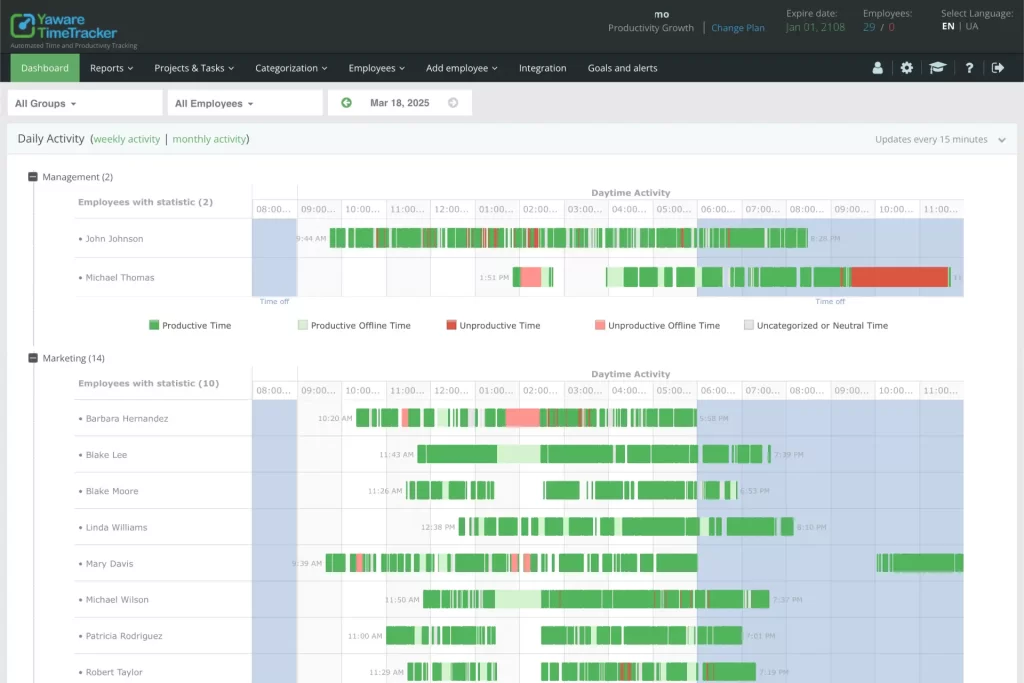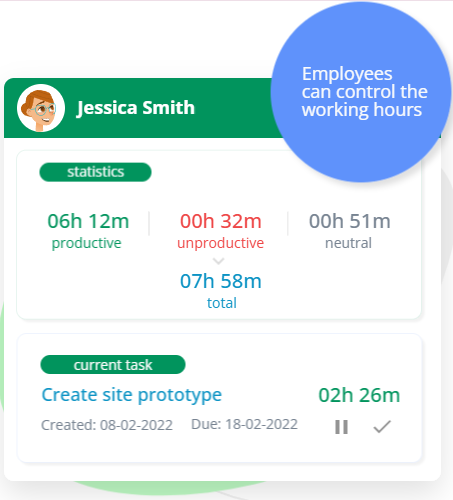How can businesses support employee mental health in the workplace? Organizations can support mental well-being by creating psychologically safe environments, empowering managers with training, and leveraging data-driven tools such as time tracking software to detect burnout risks early.
Why mental health support has become mission-critical for modern workplaces
According to Deloitte’s Workplace Well-being Survey, 59% of employees say they have experienced burnout in the past year—yet only 36% feel their organization offers adequate support. For business leaders, this represents more than a wellness challenge; it’s a direct threat to performance, retention, and long-term growth. When mental health is inadequately addressed in corporate culture, productivity sinks, absenteeism rises, and team cohesion erodes. In dynamic work environments, especially hybrid and remote teams, psychological safety is not just an HR concern—it’s a leadership imperative.
This article uncovers the real reasons why mental health remains a structural blind spot and outlines a sustainable framework to help your organization respond with depth and clarity. You’ll gain insights into common pitfalls, best practices, and actionable systems—such as employee time tracking software—to build a resilient, mentally healthy workplace starting today.
What challenges stop employers from creating mentally healthy environments?
Lack of psychological safety undermines meaningful communication
Many organizations focus on workload and performance metrics but neglect the emotional dynamics of teams. When employees fear judgment or consequences for speaking up, psychological safety plummets. This invisible friction stifles innovation and makes early signs of stress go undetected until escalation. Leaders may think they’re approachable, but in high-pressure environments, perception gaps grow wide.
To fill this gap, managers need to be trained not just in mental health literacy, but in energizing team trust. Incorporating tools like an employee productivity tracker can also surface patterns that indicate disengagement or overload without waiting for someone to signal distress outwardly.
Managers are willing but unequipped to provide the right support
Most managers today understand the gravity of mental health concerns—but knowing isn’t doing. Without a structured approach, they’re left improvising responses to complex emotional and psychological issues. According to Mind Share Partners, 61% of managers received no mental health training in 2022, despite being a frontline touchpoint for identifying early warning signs.
To prevent burnout from cascading across departments, organizations need to invest in both skills and systems. For example, integrating employee time management tools helps managers understand hidden strain, workload imbalances, and efficiency drops—without breaching privacy.
How tracking tools can help you prevent burnout before it starts
Introducing transparency helps spot unhealthy patterns early
Consistency and transparency are key when it comes to fixing problems you cannot always see. Often, burnout doesn’t result from working too many hours—but from working inefficiently under pressure, with low visibility. Using reliable employee time tracking systems, you can trace patterns that may suggest long stretches of unrelieved cognitive load, multi-tasking fatigue, or diminishing engagement over time.

This data is essential. It shifts conversations away from vague “stress” to observable realities like task overload per project or frequency of breaks skipped. That allows you to intervene with targeted options—such as adjusting roles or granting decompression days—before chronic exhaustion sets in.
Explainer: What is time tracking software for workplace wellness?
Time tracking software captures when, how, and where employees spend their working hours. But beyond payroll accuracy or productivity measurement, it plays a powerful diagnostic role. Advanced systems like employee time tracking and management software leverage analytics to map workload trends, detect signs of overload, and nudge time management behaviors gently back on track.
Used wisely, these tools don’t micromanage; they empower. Employees gain awareness of focus leaks, priority misalignment, or silent overwork. Managers benefit from actionable insights that inform smarter delegation and deadline planning. When coupled with a culture of support—not surveillance—this data becomes a wellness ally, not a threat.
What steps can employers take to embed mental health support into business operations?
A mentally healthy workplace doesn’t emerge from one wellness week or a motivational speaker—it’s built through intentional systems, modeled behaviors, and ongoing feedback loops. Embedding emotional resilience into daily operations requires leadership clarity and structural redesign. Below is a roadmap any HR leader or executive team can adapt to build psychological safety from within.
- Audit your current workflows for cognitive strain. Use tools like employee tracking software to identify excessive load zones, role ambiguities, and time wastage bottlenecks that stress employees subconsciously.
- Train managers as emotional skill-builders. Offer training focused on empathetic listening, burnout detection, and mental health first-aid—not just escalation protocols.
- Set norms around breaks and recovery. Normalize micro-breaks, decompression days, and psychological detachment outside work hours. Make it clear these are cultural standards, not exceptions.
- Protect psychological safety through policy. Ensure that confidentiality, non-retaliation for disclosures, and a fail-safe check-in system are codified—not ad hoc responses.
- Measure impact continuously. Combine qualitative wellness feedback with quantitative data from time tracker systems to validate whether interventions are working or need recalibration.
Change begins with structure. These five actions create the scaffolding for microclimates of trust and resilience that spread across departments over time.
Which cultural changes accelerate workplace mental health improvements?
While systems provide structure, culture ensures adoption. Even the most advanced solutions—like automated time tracking software—will fall flat if employees perceive them as surveillance rather than support. Culture is what translates policies into lived everyday experience.
Fostering real impact means shifting the signals employees receive about where they stand. Here are key values that high-performance organizations use to deepen psychological safety and mental resilience:
- Trust over control: Empower people to own their time and request recalibration without fear.
- Progress over perfection: Celebrate small advances in well-being practices, not binary outcomes.
- Transparency over assumptions: Let the data speak for itself—make insights available to teams, not just leadership.
- Support over silence: Create visible, accessible ecosystems where asking for help is met with clarity, not confusion.
When these values are lived consistently, burnout prevention becomes proactive—baked into how your business operates daily, not saved for annual check-ins.
Business impact requires structural change, not surface support
Providing mental health support at work is no longer a feel-good initiative—it’s a business-critical investment. To move from intention to impact, organizations must shift from reaction to design. That means equipping managers, embedding best practices, and using systems like employee time tracking software to surface early warning signs before burnout scales.

Don't wait for declining engagement or high turnover to wake up the conversation. Start building your organization's mental health infrastructure today—because a healthy team isn’t just happier, they’re unified, resilient, and strategically aligned for growth.
Ready to detect burnout before it happens? Implementing a Yaware.TimeTracker helps your managers see hidden workload risks and gives employees more control over their time. Start designing a healthier operational system now—your people and performance will thank you.

